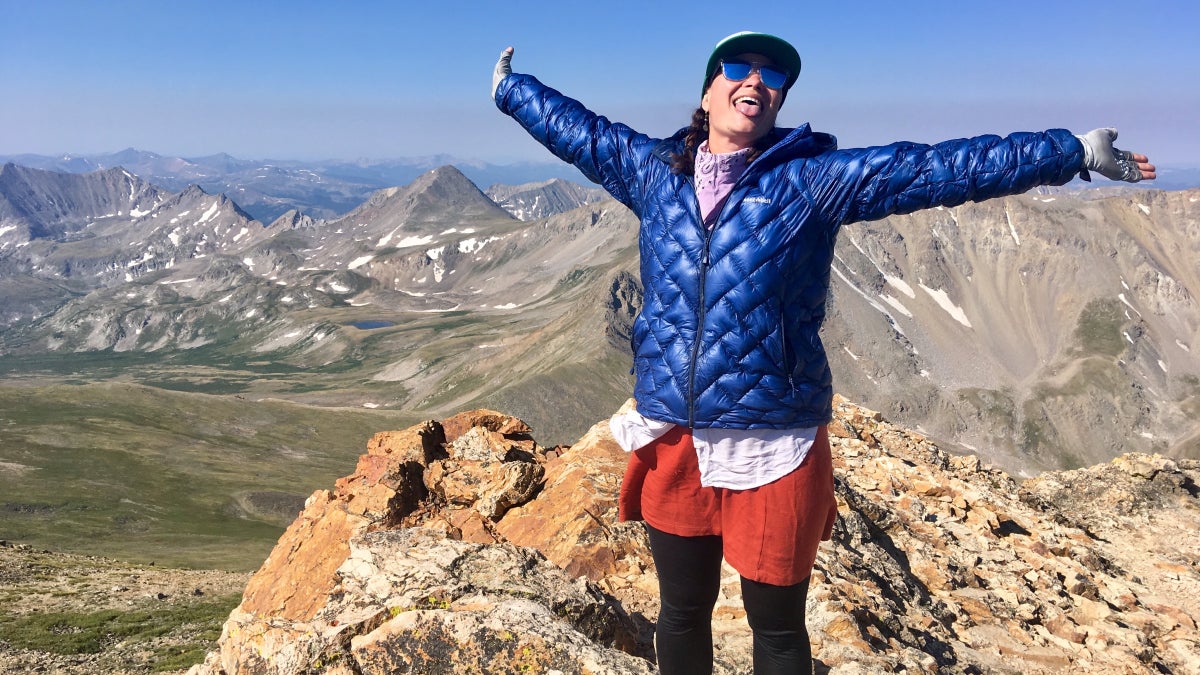
It was somewhere around the third or fourth storm on the tenth day of my first attempt at the Colorado Trail that I began to question my sanity.
I was drenched nearly to my internal organs, my pack probably five or 500 pounds heavier than before the sky began throwing its endless tantrum. So much hail had come down over the prior days that it felt like I’d been trapped in an endless paintball loop with a sadist, my skin raw from the relentless assault. I fantasized about leaving the trail, chucking my gear into the nearest trash can, and making a new life as a used bookseller in some quaint Colorado town. I could take up knitting. Tend to a garden. Plan the kind of vacations where you remain mostly horizontal.
Then a burly wind gust blew through my daydream, shoving me to the ground, and I began to cry.
This was supposed to be fun—or at least, that’s how I pitched it to my hiking companion, MacGyver, who I’d met while trekking the Pacific Crest Trail. I spent two years working on a guidebook for the PCT, hiking the first thousand miles multiple times in multiple seasons, and I craved a fresh path; MacGyver just figured that hiking sounded better than not hiking.
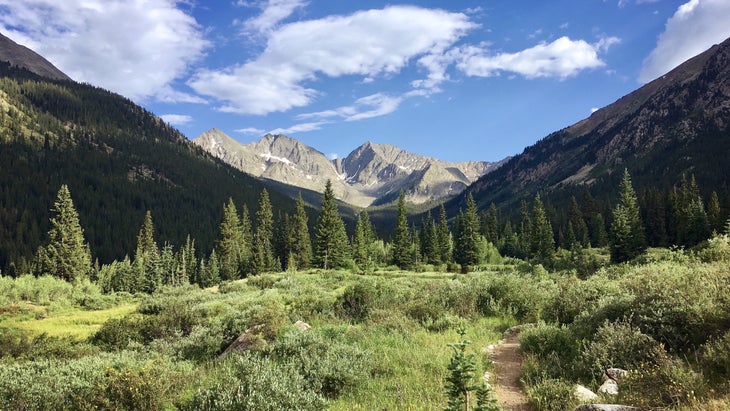
The Colorado Trail (known as the CT to its faithful and the syllable-averse) promised to fulfill our simple requests. Its roughly 486 miles, cast on a squiggly diagonal across the Centennial State, connect Denver to Durango via a rollercoaster route of single track and dusty roads. The trail contours around slopes thick with aspen and wildflowers, passes through forests rife with conifers and chanterelles, plunges across creeks and rivers, skirts crystalline lakes, and ascends a handful of high mountain passes. After so much time spent in California’s deserts and Sierra splendor, I wondered if a different landscape could equally stir my soul.
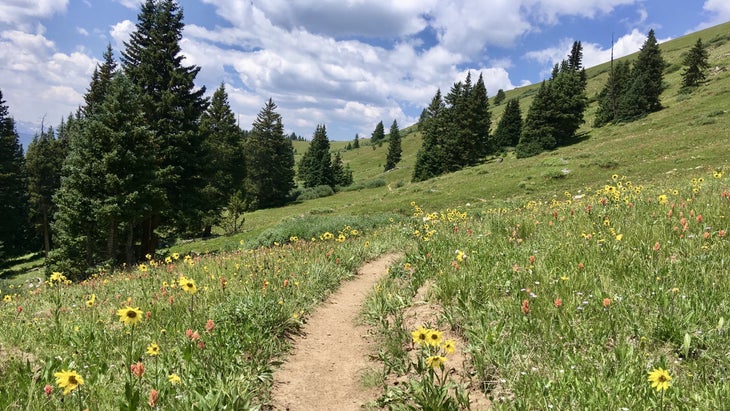
In parts, the CT delivered. As MacGyver and I began our southbound hike just outside Denver, we marveled at the newness of it all. Back home, the Sierra’s highest reaches exist as white-grey moonscapes constructed of angular granite; here, the mountain passes unfurled in soft carpets of tundra, greener and lusher than anything I’d experienced in California. The forests felt older, denser, and delightfully mysterious, the kind of places where you might stumble across a fairy flitting about a smattering of toadstools. Sure, there were marmots and pika and deer scampering around as they were back home, but for the first time in my life, I also watched moose lumber across the trail, quietly munching on the abundant vegetation not far from where we froze in awe.
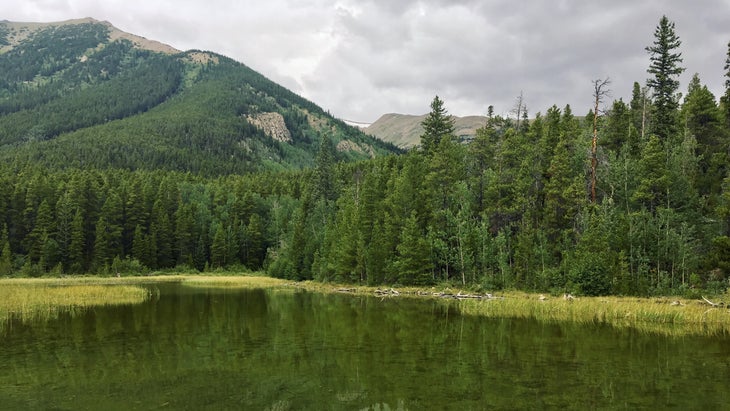
For each of these fresh wonders, however, the CT seemed to deliver an equal number of fresh hells. We discovered quickly, for instance, that the trail’s architects were seemingly unaware of the power of the humble switchback. I wrote in my journal:
“It is a violent, aggressive trail. When it goes up, it does so at an exhausting grade. Almost worse, it does the same on the way down. The jolting pain of each step, usually tangled in wet tree roots or sharp rocks, is an assault on the body.”
MacGyver chose to address such rudeness by rocketing up each incline like a wayward bull; I preferred to suffer slowly, muttering a litany of curse words to score the misery. It was no surprise to either of us when one of MacGyver’s knees simply quit bending at the two-week mark of our journey.
Our tally of complaints grew by the hour. The trail lacked the “wow” factor of the High Sierra’s alpine vistas. The route was frequently lined with stubby, stabby plants we referred to as “violent pines.” Other hikers were nearly nonexistent (I didn’t mind; poor MacGyver, however, had been conditioned to the PCT’s summer camp social air and began talking to me—or at me—nearly nonstop in the vacuum of humanity). The forest was filled with terrifying, Blair Witchian structures. The water tasted of a gently bovine essence. And we were constantly dodging bicycles, especially during the Breckenridge 100, a century race near the ski town that partially converges with the CT. It was an added insult to the parade of injuries when, after hours of jumping downhill to avoid being run over, my body decided that it would clear itself of all contents in a manner not unlike colonoscopy preparation.
Then there were the storms, which came in multiple waves almost every day. Once, while camping with friends at Kenosha Pass, the sky morphed from sunny to angry in an instant, burying our tents, campfire, and dinner in a rage of hail. Another day, after MacGyver left the trail to rest his battered knees, I experienced five separate thunderstorms that drowned everything so thoroughly that I was forced to pitch my tent in the smallest puddle I could find.
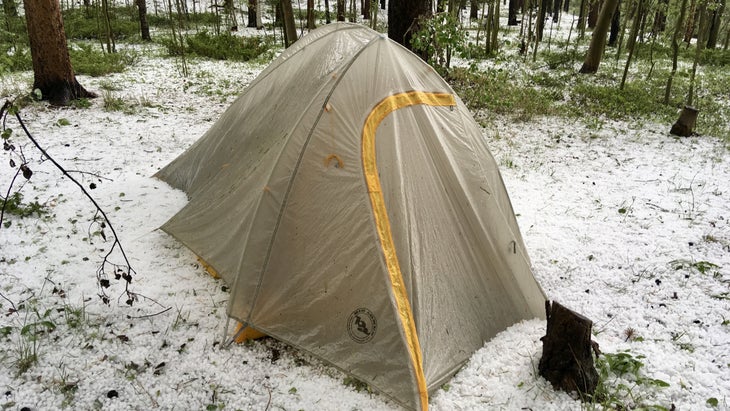
And, of course, there was the storm that knocked me off my feet. Resting on the ground, pack against the wet dirt, I cried. I sniffled. I wailed. And then I screamed.
I eventually staggered to my feet and began walking, faster and angrier, sadder and more weirded out than I’d ever felt on a trail. When I caught up to MacGyver, he looked at my tear-soaked cheeks and asked, “Are you ok?”
I answered, “No, I am not.”
We walked in silence and I ruminated. Halfway in, the Colorado Trail had tested not just my physical limits, which I welcomed, but also my emotional ones—and I wondered if it had nudged them a bit too far. This is, of course, one of the realities on any long hike: the further you walk, the deeper you go. You’ve just got to be ready for a little soul excavation along the way.
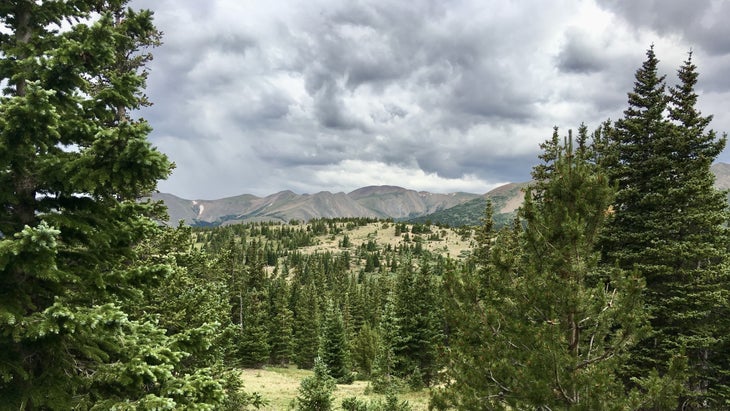
MacGyver and I didn’t finish the trail that summer. His knees wouldn’t allow it, and neither would my cat sitter, who texted that she couldn’t handle my feline’s rather aggressive affections and could I please come home. We were both subtly relieved.
In the months that followed, however, we sent a volley of texts, their contents growing progressively more deranged:
“I’m never hiking the CT again.”
“That was as bad as I’m remembering it, right?”
“I dunno—I’m not a quitter. CT this summer?”
“Actually, let’s yo-yo the CT? Double the fun!”
“I might be a masochist, but I miss the CT.”
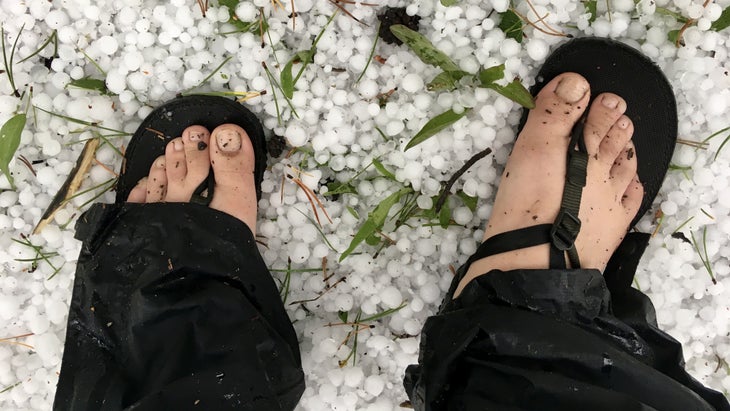
So MacGyver and I returned the following summer, battle-worn soldiers lured by the siren call of grassy peaks and shimmering aspen, munching moose, and a touch of amnesia, strangely excited for the pummeling to come. Just as soon as we’d begun the mental and physical preparations, however, the 416 and Burro fires erupted, scorching over 54,000 acres near the trail’s southern half and derailing our plans for a glorious completion. We settled on hiking the 160-mile Collegiate Loop at the CT’s midsection, named for a parade of fourteeners strung across its heights.
We hitched to the loop’s southern end and began wandering its heavily forested eastern stretch with a bit of delusional optimism that was quickly tamped by the same hot and dry conditions that primed the wildfires’ spread. Instead of the previous summer’s monsoonal drenching, we were sunburned and eternally thirsty, loading our packs with six liters of water any time we found a running source. “It’ll get better when we’re on the western side,” one of us would utter from time to time. “Yes, it’ll get better,” the other would reply, with a strong lack of conviction.
(It did not, in fact, get better.)
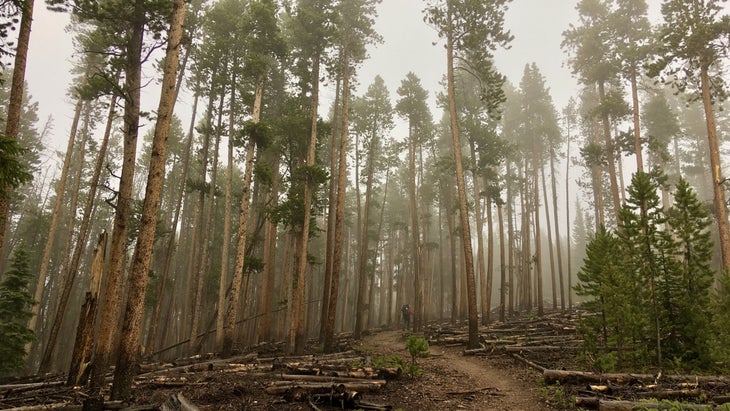
Wildfire smoke poisoned the air. We were intimidated by a trio of crabby moose. I was nearly flattened by a mountain bike. During a side quest to climb a pair of fourteeners (Mount Belford and Mount Oxford) with some Denver pals, I grew dizzy and nauseous, barely tagging one peak before stumbling back down to my tent only minutes before a multi-hour storm soaked the area. Then, the rotten cherry on top: my lightweight pack, overburdened with water and ill-equipped for the task, created a patch of chafe that eventually bloomed into an open wound. Despite MacGyver’s best efforts at playing medic, it was once more time to call it quits.
As before, I wasn’t exactly sad to leave. But this time, it wasn’t because I was ready to go; it was because I not only figured we’d be back, but also knew that somehow, I’d gotten exactly what I’d come out here for. Not just the moments of sublime beauty, time with my thoughts, and endless conversation, but also the difficulty, the chaos, the opportunity to peel back yet another layer of my humanness and examine what lay beneath. The suffering and the enlightenment, so deeply intertwined along this trail.
On our final morning, I slowly dismantled my tent, whispering goodbye to the pain and the penance, but also the pines and peaks and moose and magpies. I moved on pensive autopilot until my foot lodged under a large rock, sending me sailing, my pack a bully’s hand pushing me into the dirt. My wool tights ripped at the knee; my flesh scraped from the same. I rolled over and watched the blood come. And then I laughed. The tears that followed weren’t ones of sadness or anger or frustration, but of knowing: the trail always provides—as long as you’re willing to accept a bit of suffering.
Shawnté “Rustic” Salabert has happily suffered through thousands of miles on other long trails, including the John Muir Trail / Nüümü Poyo, Backbone Trail, and Pacific Crest Trail, and has nothing but glowing words for the latter in her guidebook Hiking the Pacific Crest Trail: Southern California. She’s a contributing writer for Treeline Review, a recurring guest on the Rock Fight podcast, and has written about national parks, urban ecology, and the outdoor industry for Outside. Her next book, to be announced later this year, takes an unconventional look at a trail that has treated her a whole lot better than the CT ever has.
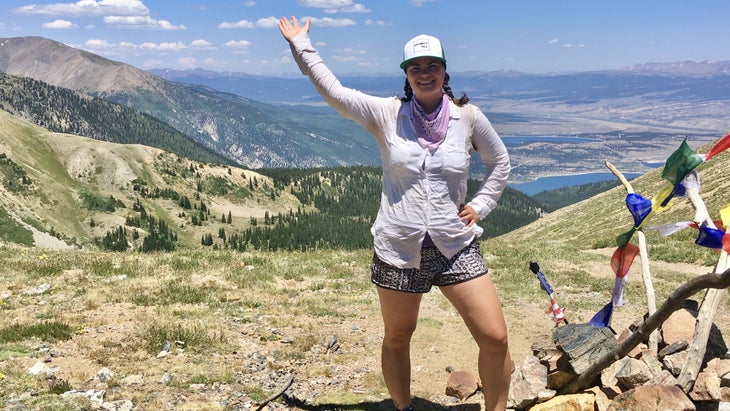
The post Why I Couldn’t Resist the Colorado Trail’s Cursed Charm appeared first on Outside Online.















